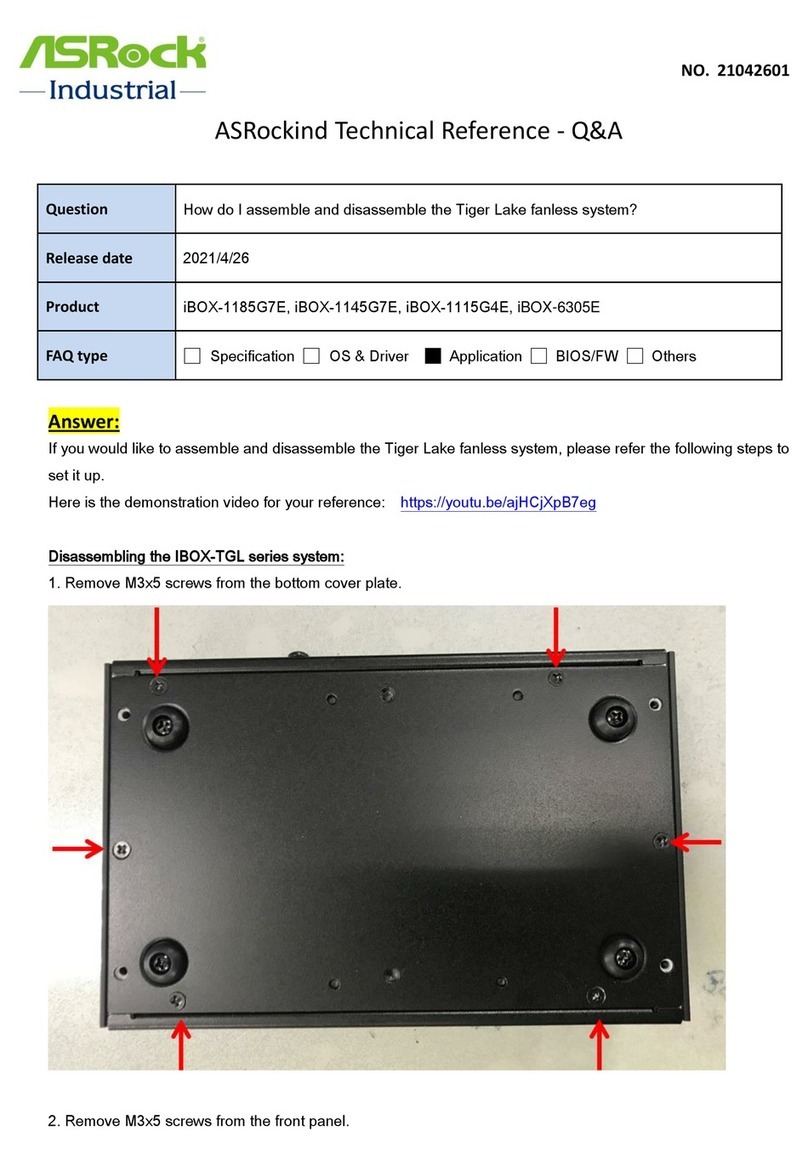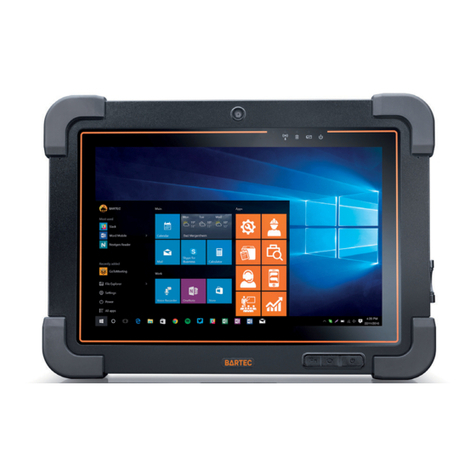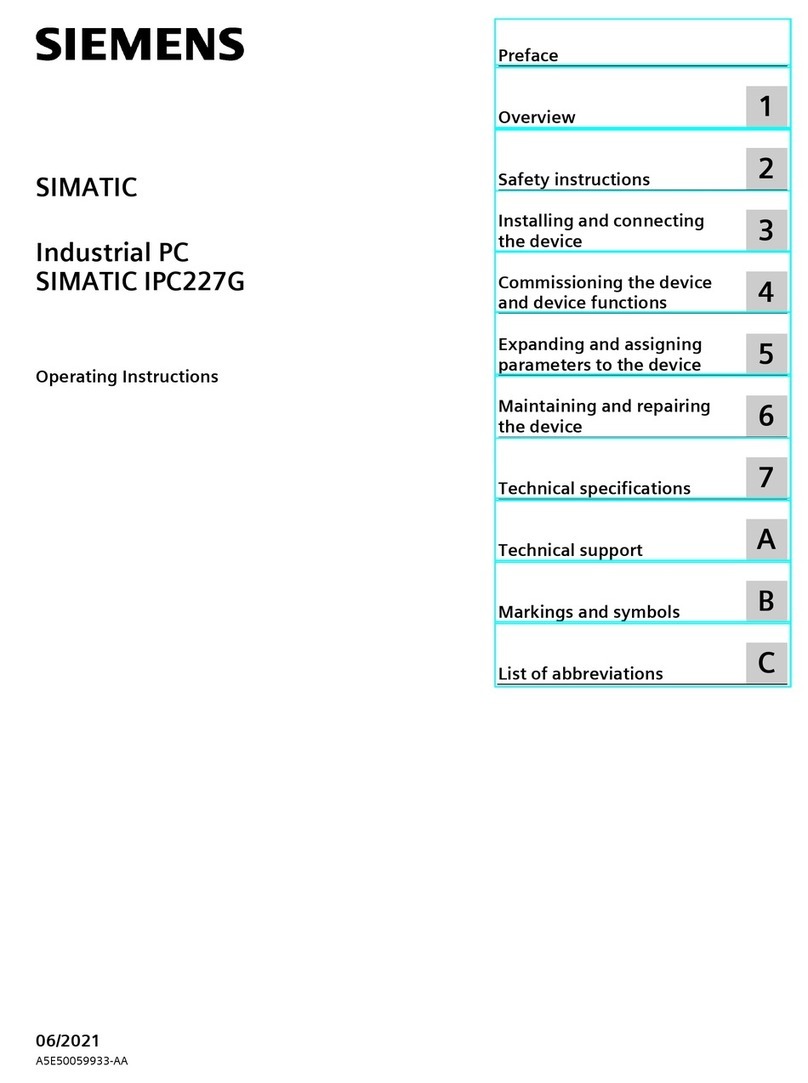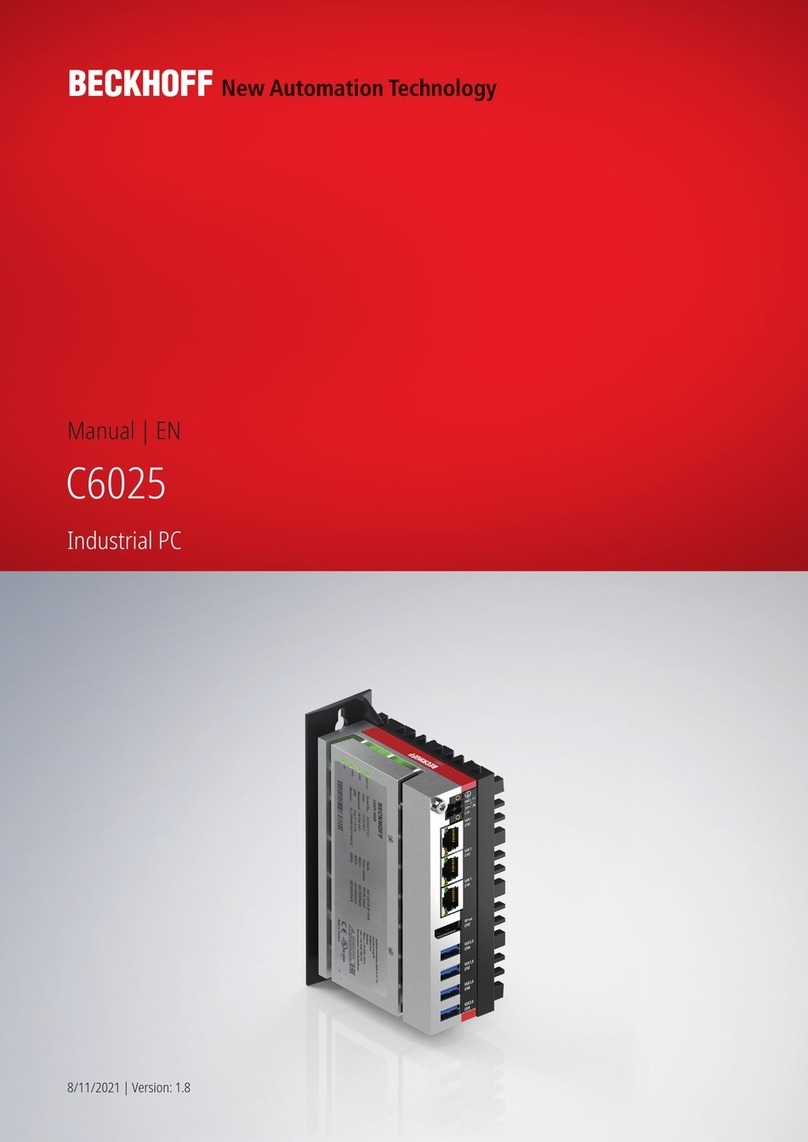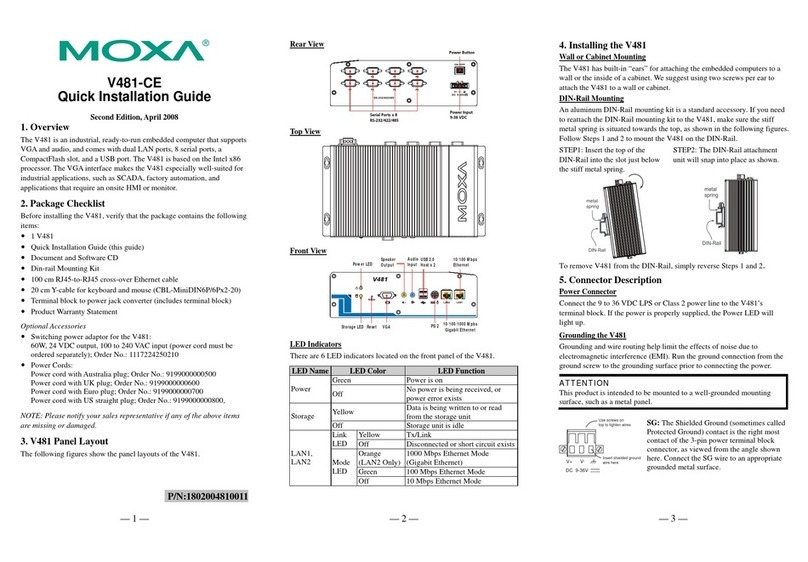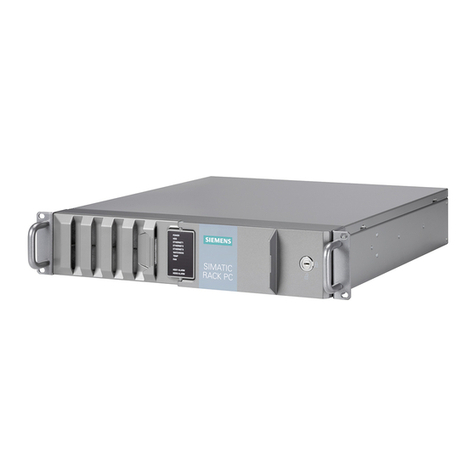Seco i-PAN T10 Baseboard User manual

Version 2.0 i-PAN T10 Baseboard 1 of 20
i-PAN T10 Baseboard
Documentation version 2.0
This document applies to i-PAN T10 V1R2.
Introduction
The i-PAN T10 Baseboard is designed for a direct installation on a 10.1” capacitive touch
display. It features most peripherals needed by today’s industrial panel-applications and because
of that is an ideal basis for customized flat panel PC solutions.
It is sold in combination with a 10.1” display and different CPU-modules and housing options.
Housing options range from simple (glued to back of the display), open metal mounting frame
and to a complete closed metal housing. It is designed to be a low-cost solution of the i-PAN XT-
Pro 10 panel.
Typical a Trizeps VII SOM with NXP i.MX 6 processor is used as CPU-module. It supports
Microsoft Windows Embedded Compact 7 or 2013, Linux and Android OS.
There are iMod flex-cable-connectors and solder-pads to extend the board functionality and
connect to SECO iMod-Adapters or customers peripherals.
Figure 1: i-PAN T10 Baseboard V1R1 assembled on 10.1” touch display with cover lens

Version 2.0 i-PAN T10 Baseboard 2 of 20
Bock Diagram
Figure 2: Simplified Block Diagram of i-PAN T10 Baseboard V1R2

Version 2.0 i-PAN T10 Baseboard 3 of 20
1CONNECTOR POSITIONS
Interfaces and connectors of i-PAN T10 Baseboard.
Figure 3: Connectors of i-PAN T10 Basebaord
Connectors:
J200: Trizeps VII SODIMM connector
J201: Trizeps VII High Speed connector
J202: µSD-Card connector
J217: iMod Button/I2C or UART connector
J218: Raspberry Pi compatible camera connector
J300: Touch connector
J301: Display connector
J302: iMod UART connector
J303: iMod USB/I2C connector
J305: iMod CAN connector
J306: Headset 3.5 Audio Jack (CTIA)
J400: Power connector
J500: Ethernet connector

Version 2.0 i-PAN T10 Baseboard 4 of 20
J501: µUSB connector
J502: USB A connector
J503: PCB terminal block for Ethernet (opt.)
Soldering Pads:
J203: FASTBOOT
J204: GND
J205: SPEAKER_P
J206: SPEAKER_N
J207: SPI1_SS0
J208: SPI1_SCLK
J209: SPI1_MOSI
J210: SPI1_MISO
J211: +3V3
J212: HEADPHONE_GND
J213: HEADPHONE_L
J214: HEADPHONE_R
J215: MIC_OUT
J219: MIC_GND
Miscellanous:
BATT200: Battery Connector (CR1632)
S200: Fastboot button
LED:
D500: DUO LED (Link and Activity)

Version 2.0 i-PAN T10 Baseboard 5 of 20
2USER CONNECTORS
J400: Power connector
Pin
Signal
1
VIN (+9V up to +24V)
2
GND
Connector:
PTSM 0,5/2-HH-2,5-SMD by Phoenix Contact (1778764)
Mating Connector:
PTSM 0,5/2-P-2,5 by Phoenix Contact (1778832)
PTSM 0,5/2-PL-2,5 by Phoenix Contact (1709457) (incl. locking)
The panel can be either powered by this connector or optional through POE (Power-Over-
Ethernet, J500/J503).
Voltage polarity protection is achieved through a diode.
A Nanofuse (near to J400) is used for current protection.
There is an option to mount a Wago 231-532/001-000 instead of the Phoenix PTSM connector.
J306: Headset 3.5mm Audio Jack (CTIA)
The 3.5mm audio-jack is using the commonly used CTIA pinning, so that a standard headphone
or headset can be attached to the panel.
The signals are shared with the solder pads J213 (Headphone_L), J214 (Headphone_R), J212
(Headphone_Gnd) and J215 (Mic).
Headphone_L and Headphone_R of this connector are also connected to an internal audio-
amplifier, which outputs to the speaker solder pads J205/J206.
Connector: SJ43514-SMT by Kycon
J501: µUSB connector
Connector: SD-47346-001 by Molex
The USB2.0 Micro-USB connector is routed to USB-OTG port of the Trizeps module.
Function depends on the placed Trizeps module and operating system.
This interface may be used as USB-Slave, USB-Host or real USB-OTG port.
Note that the USB-OTG port is also connected to the iMod USB/I2C connector J303.
Only one of both connectors can be used at the same time!

Version 2.0 i-PAN T10 Baseboard 6 of 20
J502: USB A connector
Connector: USB-A-S-S-B-SM2-R by Samtec
The signals of the USB2.0 Typ-A connector are routed to the USB-Host port of the Trizeps
module.
The +5V supply to the USB-port are short-circuit protected and current-limited (0.75A-1.25A) by
a power-switch.
J500, J503: Ethernet connector
The Ethernet connector uses the 10/100Mbit Ethernet-interface of the Trizeps module.
Three different POE (Power-Over-Ethernet) options are available:
▪No POE.
▪IEEE 802.3af compatible with max. 12W output to the panel and its peripherals.
▪A simplified version, where +12V..24V is applied to pins 7+8 and Gnd to pins 4+5 of
the RJ45 connector.
On standard a RJ45 connector is used.
Optionally a PCB terminal block for easy push-in spring connection is mountable.
Note that the PCB terminal block uses reverse pin-numbering compared to RJ45:
Pin
Signal
1
NC4 (+12..24V for simplified POE)
2
NC3 (+12..24V for simplified POE)
3
RX-
4
NC2 (Gnd for simplified POE)
5
NC1 (Gnd for simplified POE)
6
RX+
7
TX-
8
TX+
J503: PCB terminal block connector: 1771088 by Phoenix
D500: DUO LED (Link and Activity)
The LED next to the ethernet connector shows the status of the ethernet-connection:
red - link-speed
yellow - link-activity
J503: µSD-Card connector
This µSD-Card slot is powered by 3.3V.
Its signals are connected to the first SD/SDIO port of the Trizeps module.
It may be used to extend the storage-memory of the panel with a Micro-SD card.

Version 2.0 i-PAN T10 Baseboard 7 of 20
3INTERNAL CONNECTORS
J303: iMod USB/I2C connector
The iMod USB/I2C connector is a standard connector defined by SECO to allow customers to
easily add functions to a baseboard.
SECO offers different extension boards ranging from a simple breakout board or an additional
USB-type A connector to current-, voltage-, TOF-, NFC- sensors or IO-expander boards.
Customers may design their own peripherals which can be connected through a 10pol FFC
cable.
Pin
Signal
Function
1
+5V
Power
2
USB_DM
USB D- signal
3
USB_DP
USB D+ signal
4
GND
Power
5
+3V3
Power
6
I2C_CLK
I2C Clock signal
7
I2C_DATA
I2C Data signal
8
GPIO_00
GPIO; Mainly used as interrupt input pin by attached
boards.
9
GPIO_AUX
GPIO; Mainly used as output.
10
\RESET_OUT
Reset output of the Trizeps module:
Low during reset and suspend.
High when running.
Connector: 687110149022 by Wuerth
The USB-OTG port of the Trizeps module is used by this connector.
This interface may be used as USB-Slave, USB-Host or real USB-OTG port. Actual function
depends on Trizeps module and operating system.
Note that the USB-OTG port is also connected to the Micro-USB connector J501.
Only one of both connectors can be used at the same time!
The +5V power-supply-pin is not over-current protected.

Version 2.0 i-PAN T10 Baseboard 8 of 20
J302: iMod UART connector
The iMod UART connector is a standard connector defined by SECO to allow customers to
easily add functions to a baseboard.
SECO offers different extension boards ranging from a simple breakout board to
RS232/RS485/RS422 transceiver boards.
Customers may design their own peripherals which can be connected through a 10pol FFC
cable.
Pin
Signal
Function
1
UART1_RI
RI input
2
UART1_DCD
DCD input
3
UART1_DSR
DSR input
4
GND
Power
5
+3V3
Power
6
UART1_RTS
RTS output
7
UART1_CTS
CTS input
8
UART1_TXD
TXD output
9
UART1_RXD
RXD input
10
UART1_DTR
DTR output
Connector: 687110149022 by Wuerth
This connector uses UART1 (COM1:) of the Trizeps-module.
Besides using it as normal serial-port, it can additional be configured to give debug-output of the
operating system or to enter the bootloader of the Trizeps on startup.
Most signal pins of a Trizeps can be configured as GPIOs. Some or even all UART-pins of this
connector could be used as GPIOs.

Version 2.0 i-PAN T10 Baseboard 9 of 20
J217: iMod Button/I2C or UART connector
The iMod connectors are standard connectors defined by SECO to allow customers to easily
add functions to a baseboard.
There are two mounting options for J217:
a) iMod Button/I2C
The connector got 3 GPIOs for buttons and an I2C-interface for sensors etc.
Pin
Signal
Function
1
FASTBOOT
On/Off, Fastboot, … (OS-specific)
2
SP113
Generic Button, i.e. Volume+
3
SP117
Generic Button, i.e. Volume-
(opt. RESET_IN of Trizeps module)
4
GND
Power
5
+3V3
Power
6
I2C_CLK
I2C Clock signal
7
I2C_DATA
I2C Data signal
8
SP119
GPIO; Mainly used as interrupt input pin by attached
boards.
9
SP112
GPIO; Mainly used as output.
10
\RESET_OUT
Reset output of the Trizeps module:
Low during reset and suspend.
High when running.
Connector: 687110149022 by Wuerth

Version 2.0 i-PAN T10 Baseboard 10 of 20
b) iMod UART
This connector adds one additional UART which can be connected to an RS232/RS485
extension board.
Pin
Signal
Function
1
FASTBOOT
On/Off, Fastboot, … (OS-specific)
2
SP113
Generic Button, i.e. Volume+
3
SP117
Generic Button, i.e. Volume-
(opt. RESET_IN of Trizeps module)
4
GND
Power
5
+3V3
Power
6
UART2_RTS
RTS output
7
UART2_CTS
CTS input
8
UART2_TXD
TXD output
9
UART2_RXD
RXD input
10
\RESET_OUT
Reset output of the Trizeps module:
Low during reset and suspend.
High when running.
Connector: 687110149022 by Wuerth
This connector uses UART2 (COM2:) of the Trizeps-module.
Note that unlike the iMod UART connector J302, only the TXD, RXD, RTS and CTS signals of
the UART-interface are available. The GPIO-pins used for the buttons stay the same as on the
iMod Button/I2C mounting option.

Version 2.0 i-PAN T10 Baseboard 11 of 20
J305: iMod CAN connector
The iMod CAN connector is a standard connector defined by SECO Northern Europe to allow
customers to easily add a CAN transceiver & connector to the baseboard.
Pin
Signal
Function
1
+5V
Power
2
CAN_GPIO2
Generic GPIO
3
CAN_GPIO3
Generic GPIO
4
GND
Power
5
+3V3
Power
6
CAN2_TX
Single ended TX output of CAN port 2
7
CAN2_RX
Single ended RX input of CAN port 2
8
CAN1_TX
Single ended TX output of CAN port 1
9
CAN1_RX
Single ended RX input of CAN port 1
10
CAN_GPIO0
Generic GPIO
Connector: 687110149022 by Wuerth
The CAN_TX and CAN_RX are single-ended 3V3-level signals.
A CAN-transceiver is needed to convert these to a differential CAN signal.
CAN_GPIO signals may be used for auxiliary functions, i.e. enabling CAN-termination.
J200: Trizeps VII SODIMM connector
This SODIMM200 Trizeps connector can be populated with different Trizeps modules.
Although earlier and future Trizeps products will fit too, currently only Trizeps VII modules are
shipped with i-PAN T10.
Functionality of the whole i-PAN T10 varies depending on which Trizeps module is inserted!
(i.e. processing speed, RAM, Wifi and Bluetooth, audio …)
For the actual pinning of this connector refer to the Trizeps VII datasheet.
J201: Trizeps VII High Speed connector
For the actual pinning refer to the Trizeps VII datasheet.
This connector carries the MIPI camera signals which are routed to the Raspberry Pi compatible
camera connector J218 and the LVDS display connector J301.

Version 2.0 i-PAN T10 Baseboard 12 of 20
J301: Display connector
The i-PAN T10 baseboard is qualified to connect with a 10.1 inch display:
▪10.1” TFT Display; IPS technology
▪1280x800 resolution.
▪420cd/qm
▪3mm glas
▪projected capactive touch.
Please contact SECO Northern Europe if you require another display-specification.
J300: Touch connector
See “J301: Display connector”.
J218: Raspberry Pi compatible camera connector
The iPAN-T10 got a Raspberry Pi compatible connector to attach 2 channel MIPI cameras
through a flex-cable.
Pin
Signal
1
GND
2
CSI1_DAT0_N
3
CSI1_DAT0_P
4
GND
5
CSI1_DAT1_N
6
CSI1_DAT1_P
7
GND
8
CSI1_CLK_N
9
CSI1_CLK_P
10
GND
11
CAM_PWDN
12
CAM_GPIO / CAM_CLK
13
I2C1_SCL
14
I2C1_SDA
15
+3V3
Connector: 52271-1579 by Molex

Version 2.0 i-PAN T10 Baseboard 13 of 20
Soldering pads
Pad
Signal
Function
J203
FASTBOOT
On/Off, Fastboot, … (OS-specific)
J204
GND
Power
J205
SPEAKER_P
2,5W Class-D Audio-Amp
J206
SPEAKER_N
2,5W Class-D Audio-Amp
J207
SPI1_SS0
*1)
J208
SPI1_SCLK
*1)
J209
SPI1_MOSI
*1)
J210
SPI1_MISO
*1)
J211
+3V3
Power
J212
HEADPHONE_GND
Headphone Ground
J213
HEADPHONE_L
Stereo Headphone Left
J214
HEADPHONE_R
Stereo Headphone Right
J215
MIC_OUT
Microphone Input
J219
MIC_GND
Microphone Ground
*1) Pin function depends on the Trizeps module and may require a special version to use SPI-functionality. With a
mounting option of the Trizeps VII module it is possible to route an UART RXD/TXD signal to these pins.
Headphone signals are routed to a 2,5W Class-D Audio-Amp, which outputs to the SPEAKER-
pins. It is possible to enable and disable the Speaker-Amp, but it is not possible to output
different sounds to headphone and speaker at the same time.
The same headphone and microphone signals are used by “J306: Headset 3.5mm Audio Jack
(CTIA)“.

Version 2.0 i-PAN T10 Baseboard 14 of 20
4MISCELLANOUS
Batt200: Battery connector
The battery (CR1632) supplies the Realtime clock.
S200: Fastboot switch
The Fastboot switch is connected to the Fasboot-signal, which is used by different connectors
and a solder-pad of the i-PAN T10. Its function depends on the operating system. I.e. it may act
as suspend/resume switch in WEC7 or Fasboot switch for Android.
Realtime Clock
The i-PAN T10 got a Realtime-Clock which keeps time and date while the device is powered off.
It is supplied by Batt200 when disconnected from the power-supply.
Power-Fail & Voltage Supervisor
The i-PAN T10 got a circuit to detect when the input-voltage drops below a specific level.
(The level is set through resistors and can be adjusted to customer needs.)
If that happens a signal to the Trizeps powerfail GPIO (SODIMM-Pin 79) is issued and the
application software is able to shut down or store process-data. In comparison to the i-PAN XT-
Pro 10 the i-PAN T10 has got no UPS-feature (uninterruptable power supply), so that the time
between power fail and power off is greatly dependent on the external power-source.
The input voltage may be measured by ADC-input 2 of the Trizeps module (SODIMM-Pin 4).

Version 2.0 i-PAN T10 Baseboard 15 of 20
5ELECTRICAL PIN-INFORMATION
PI: Power Input
PO: Power Output
CO: Charger Output
AI: Analog Input
AO: Analog Output
DI: Digital Input
DO: Digital Output
DIO: Digital Input/Output
DIFI: Differential Input
DIFO: Differential Output
DIFIO: Differential Input/Output
PD: Pull-Down (PDp: Pull-Down, Pull-behavior can be changed by software)
PU: Pull-Up(PUp: Pull-Up, Pull-behavior can be changed by software)
SPIN: SODIMM-Pin number. In the tables listed below, typical a transceiver-chip is in between
the Trizeps-module and the connector!
J400: Power Connector
PIN
Name
Type
Voltage
Connected To
J400-1
VIN
PI
9 ... 24V
J400-2
GND
J302: iMod UART Connector
PIN
Name
Type
Voltage
Connected To
J302-1
UART1_RI
DI
+3V3
SPIN37
J302-2
UART1_DCD
DI
+3V3
SPIN31
J302-3
UART1_DSR
DI
+3V3
SPIN29
J302-4
GND
J302-5
+3V3
PO
J302-6
UART1_RTS
DO
+3V3
SPIN27
J302-7
UART1_CTS
DI
+3V3
SPIN25

Version 2.0 i-PAN T10 Baseboard 16 of 20
J302-8
UART1_TXD
DO
+3V3
SPIN35
J302-9
UART1_RXD
DI
+3V3
SPIN33
J302-10
UART1_DTR
DO
+3V3
SPIN23
J303: iMod USB/I2C Connector
PIN
Name
Type
Voltage
Connected To
J303-1
+5V
PO
J303-2
USB_HOST3_DM
DIO
+3V3
SPIN141
J303-3
USB_HOST3_DP
DIO
+3V3
SPIN139
J303-4
GND
J303-5
+3V3
PO
J303-6
I2C_CLK
DO
+3V3
SPIN196
J303-7
I2C_DATA
DIO
+3V3
SPIN194
J303-8
GPIO_00
DIO
+3V3
SPIN43
J303-9
GPIO_AUX
DIO
+3V3
SPIN98
J303-10
RESET_OUT_N
DO
+3V3
SPIN87
J305: iMod CAN connector
PIN
Name
Type
Voltage
Connected To
J305-1
+5V
PO
J305-2
CAN_GPIO2
DIO
+3V3
SPIN126
J305-3
CAN_GPIO3
DIO
+3V3
SPIN128
J305-4
GND
J305-5
+3V3
PO
J305-6
CAN2_TX
DO
+3V3
SPIN103
J305-7
CAN2_RX
DI
+3V3
SPIN101
J305-8
CAN1_TX
DO
+3V3
SPIN99
J305-9
CAN1_RX
DI
+3V3
SPIN97
J305-10
CAN_GPIO0
DIO
+3V3
SPIN132
J217: iMod Button/I2C connector
PIN
Name
Type
Voltage
Connected To
J217-1
FASTBOOT
DIO
+3V3
SPIN122
SPIN43 (opt.)
J217-2
SP113
DIO
+3V3
SPIN113
J217-3
SP117
\RESET_IN (opt.)
DIO
DI
+3V3
+3V3
SPIN117
SPIN26
J217-4
GND
J217-5
+3V3
PO
J217-6
I2C_CLK
UART2_RTS (opt.)
DO
DO
+3V3
+3V3
SPIN196
SPIN34

Version 2.0 i-PAN T10 Baseboard 17 of 20
J217-7
I2C_DATA
UART2_CTS (opt.)
DIO
DI
+3V3
+3V3
SPIN194
SPIN32
J217-8
SP119
UART2_TXD (opt.)
DIO
DO
+3V3
+3V3
SPIN119
SPIN38
J217-9
SP112
UART2_RXD (opt.)
DIO
DI
+3V3
+3V3
SPIN112
SPIN36
J217-10
\RESET_OUT
DO
+3V3
SPIN87
J218: Raspberry Pi compatible camera connector
PIN
Name
Type
Voltage
Connected To
J502-1
GND
J502-2
CSI_DAT0_N
DIFI
MIPI
J216.61
J502-3
CSI_DAT0_P
DIFI
MIPI
J216.63
J502-4
GND
J502-5
CSI_DAT1_N
DIFI
MIPI
J216.66
J502-6
CSI_DAT1_P
DIFI
MIPI
J216.65
J502-7
GND
J502-8
CSI_CLK_N
DIFO
MIPI
J216.62
J502-9
CSI_CLK_P
DIFO
MIPI
J216.64
J502-10
GND
J502-11
CAM_PWDN
DO
+3V3
SPIN123
J502-12
CAM_GPIO
CAM_CLK (opt.)
DIO
DO
+3V3
+3V3
SPIN125
SPIN88
J502-13
I2C1_CLK
DO
+3V3
SPIN94
J502-14
I2C1_DAT
DIO
+3V3
SPIN96
J502-15
+3V3
PO

Version 2.0 i-PAN T10 Baseboard 18 of 20
6SPECIFICATIONS
Absolute Maximum Ratings
Absolute maximum ratings reflect conditions that the module may be exposed outside of the
operating limits, without experiencing immediate functional failure. Functional operation is only
expected during the conditions indicated under “Recommended Operating Conditions”.
Stresses beyond those listed under “Absolute Maximum Ratings” may cause permanent
damage to the module. Exposure to absolute-maximum rated conditions for extended periods
may affect device reliability.
Pin
Min
Max
Unit
Supply Voltage
+Vin
0
36
V
Storage Temperature
TStorage
-30
+80
°C
6.2 Recommended Operating Conditions
Pin
Min
Typ
Max
Unit
Supply Voltage
+Vin
8
12/24
32
V
Supply current
@12V with
Trizeps7 DualLite WB
and 10” display.
Note that the supply
current heavily depends
on the used Trizeps
module and application
use-case. A min. 12V 1A
power-supply is
recommended.
Linux idle
Linux using
360
470
mA
Operating temperature
-20
25
70
°C
Note: Operating conditions will differ depending on used Trizeps module and display.

Version 2.0 i-PAN T10 Baseboard 19 of 20
Mechanical Specification
Figure 3-3-1: Top-View on i-PAN T10 Baseboard V1R2
Dimensions: i-PAN T10 Baseboard: 130.0 x 100.0 x 17.0 mm (W x H x D)

Version 2.0 i-PAN T10 Baseboard 20 of 20
7ORDERCODES FOR I-PAN T10
49 100.CL: i-PAN T10 CoverLens LC (Low Cost), incl. 10.1 inch Touch-Display with cover lens,
i-PAN T10 Baseboard LC (without Trizeps VII)
49 400.CL: i-PAN T10 CoverLens FF (Full Function), incl. 10.1 inch Touch-Display with cover
lens,
i-PAN T10 Baseboard FF (without Trizeps VII)
8IMPORTANT NOTICE
This datasheet might contain errors.
Product-specification may change without further notice.
If you need to rely on a feature or specification, please contact SECO Northern Europe GmbH
before placing an order.
This product is sold in multiple configurations and housing options.
Customers must check whether their configuration fulfills legal rules and regulations incl. RED
(Radio Equipment Directive), CE, FCC and others.
Certificates of the products are usually uploaded to the SECO support website:
https://documentation.seco.com/service/doku.php
9DOCUMENT HISTORY
Rev.
Date
Author
Changes
0.9
13.04.2017
VB
Initial Version.
1.0
15.05.2017
SH
Complete rework.
1.1
21.07.2017
SH
Reduced VIN ratings.
2.0
18.11.2022
MP
Update new CI
SECO Northern Europe GmbH
Schlachthofstraße 20
21079 Hamburg
E-Mail: north@seco.com
https://north.seco.com
All rights reserved. Products subject to technical changes, improvements and misprints.
© 2022 SECO Northern Europe GmbH
Table of contents
Popular Industrial PC manuals by other brands
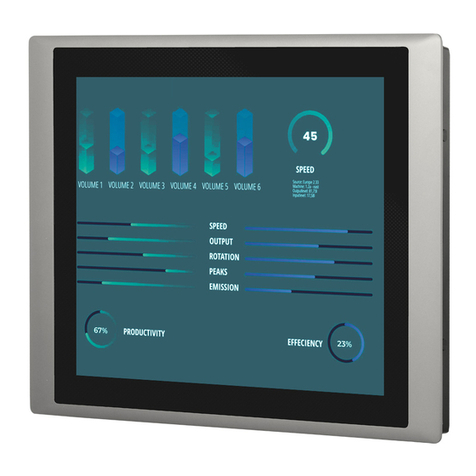
Cincoze
Cincoze CV-100/P1100 Series user manual
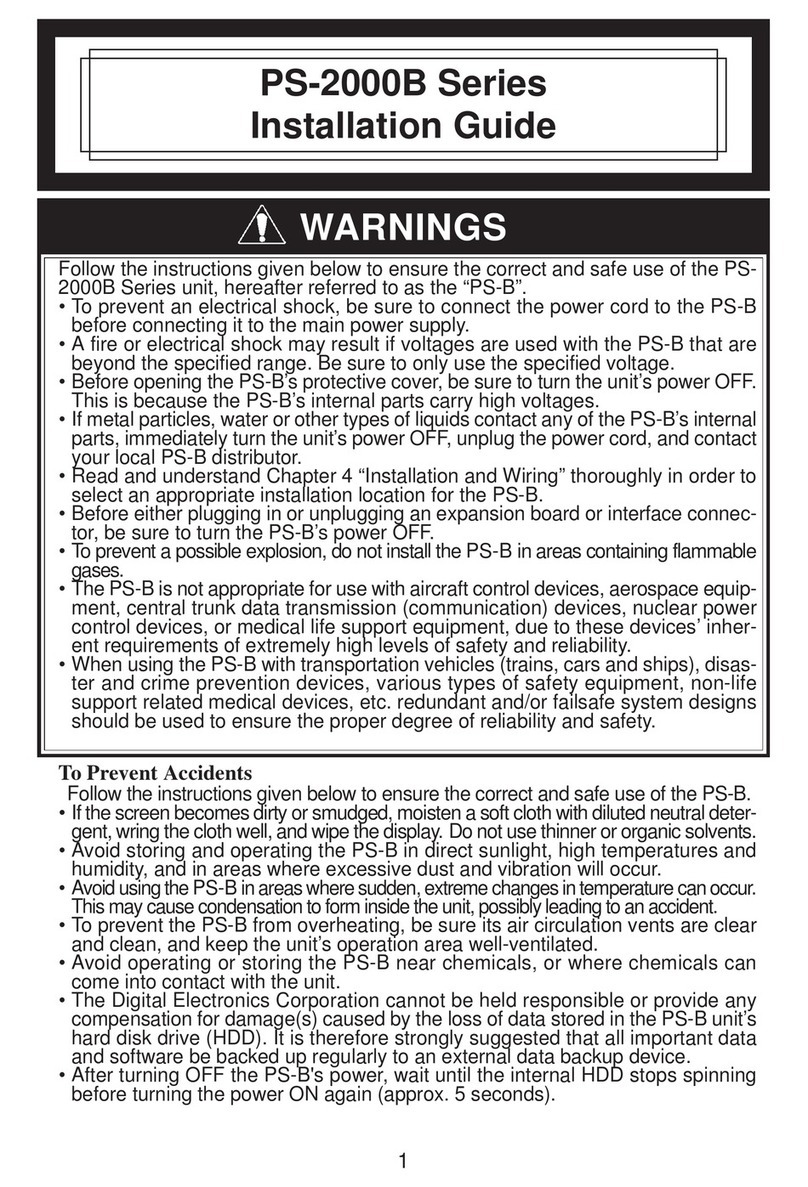
Digital Electronics Corporation
Digital Electronics Corporation PS-2000B Series installation guide
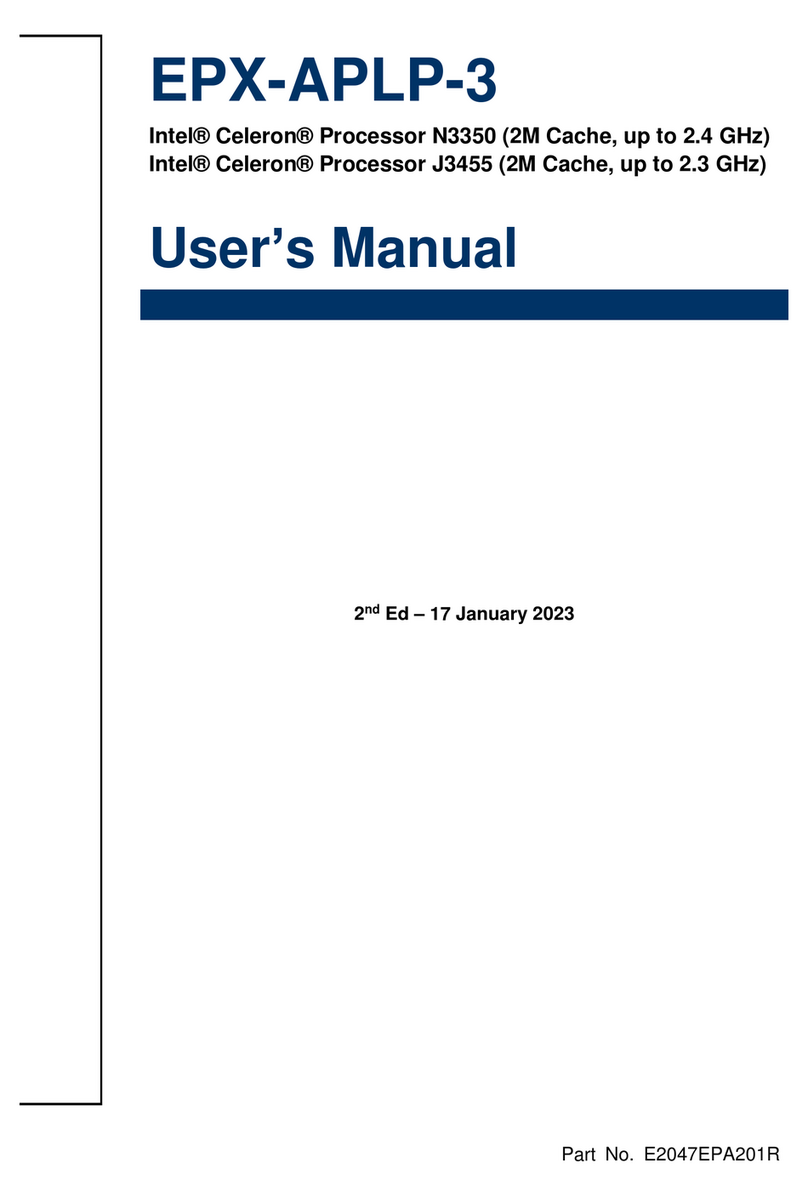
Avalue Technology
Avalue Technology EPX-APLP user manual
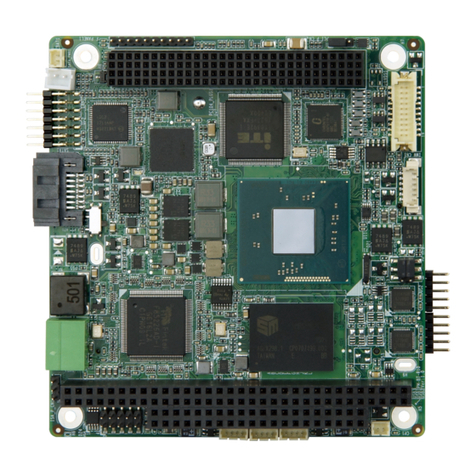
IEI Technology
IEI Technology PM-BT-E38xx1W2-R10 Series Quick installation guide

Kontron
Kontron KBox E-120-EKL user guide
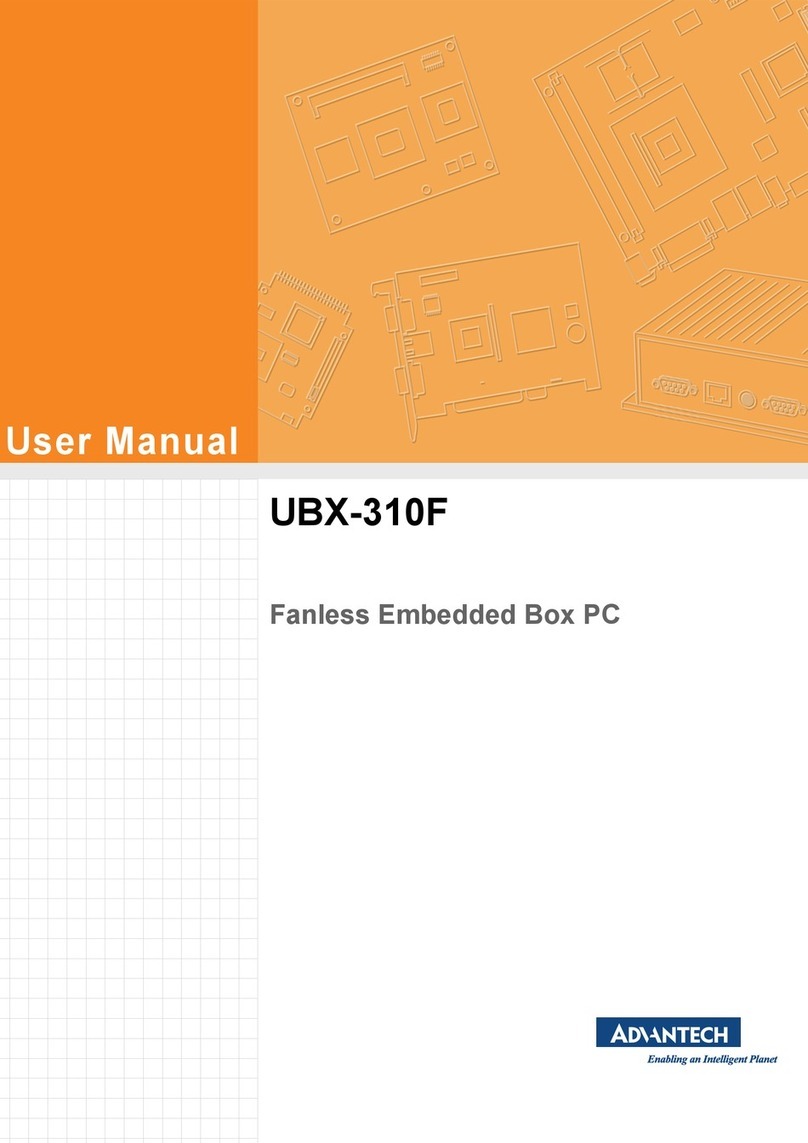
Advantech
Advantech UBX-310F user manual
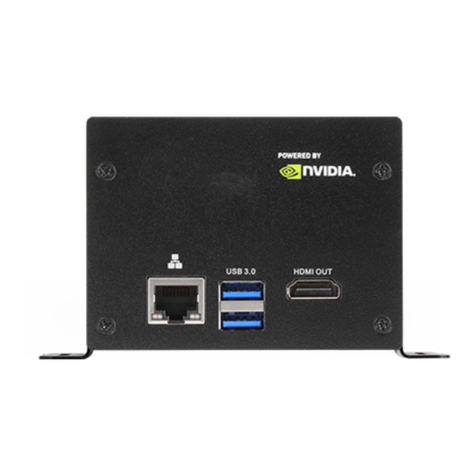
DFI
DFI EC102-XNX user manual
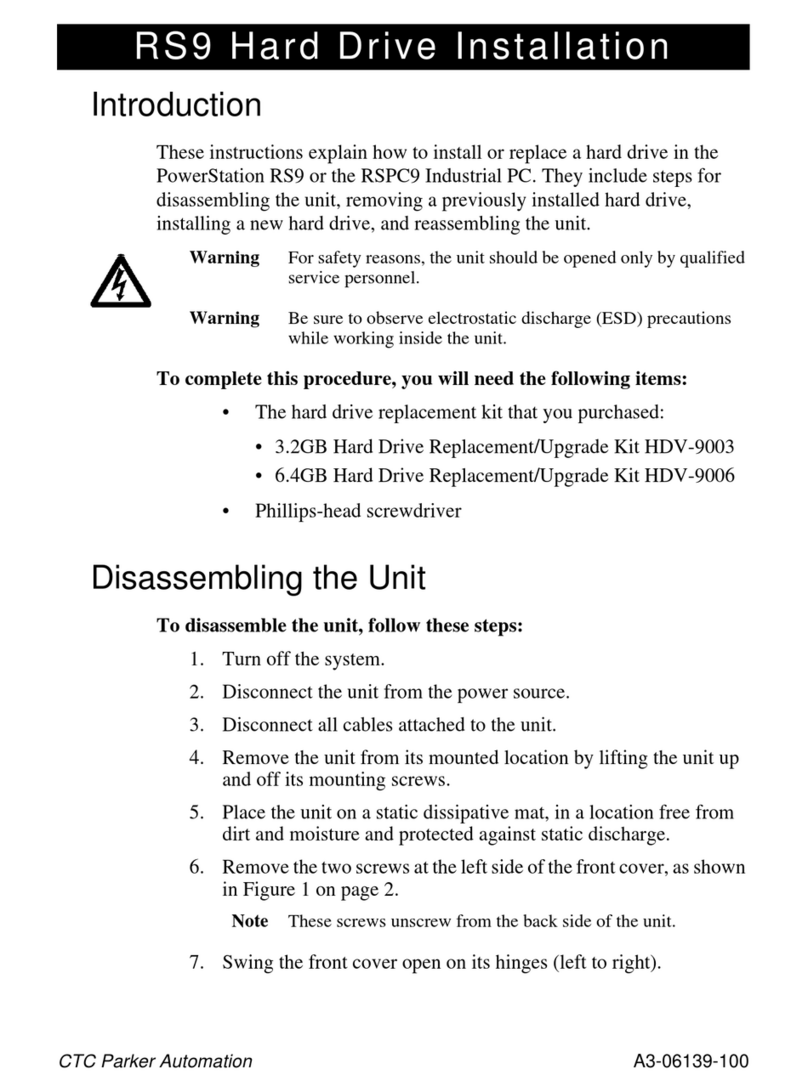
Parker
Parker PowerStation RS9 installation instructions
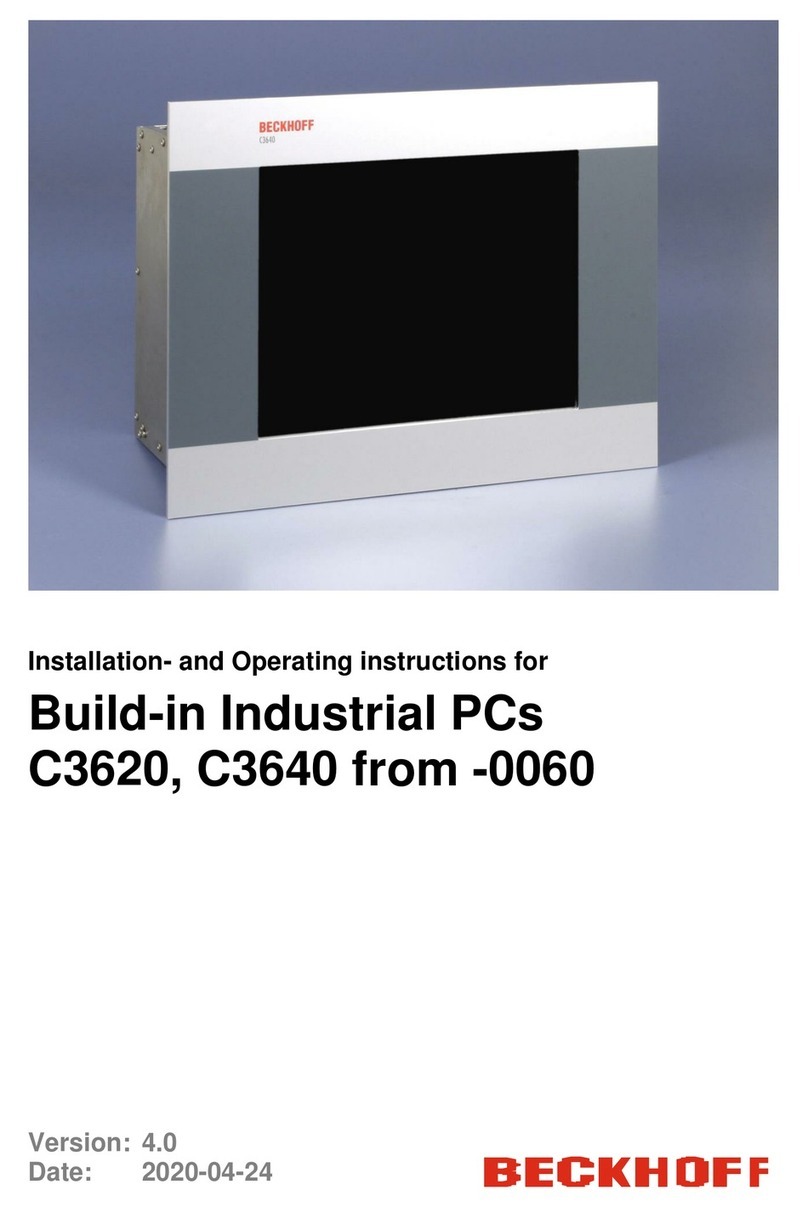
Beckhoff
Beckhoff C3620 Installation and operating instructions

CompuLab
CompuLab FIT-PC4 BATTERY REPLACEMENT GUIDE

ABB
ABB IndustrialIT Compact HMI 800 Getting started
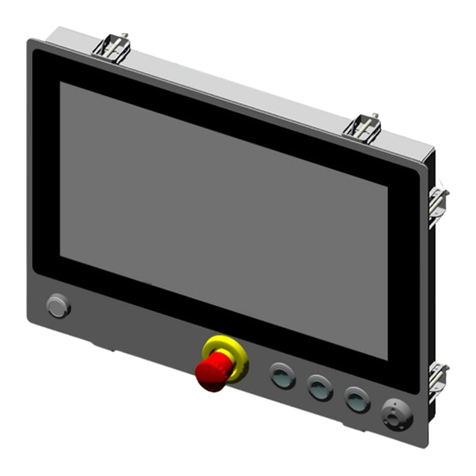
SYSTEM Electronics
SYSTEM Electronics COPILOT PB user manual
